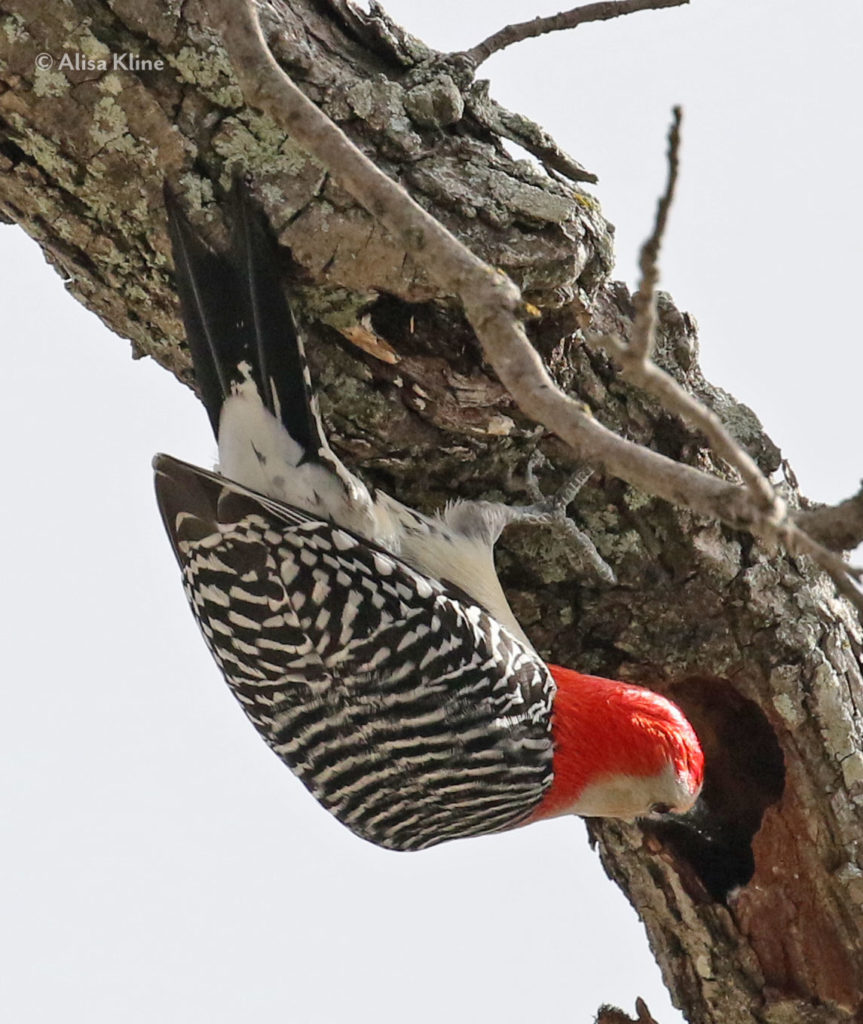The dude

Red-bellied woodpeckers abide. They don’t depend on any particular food source, happy to tuck into a nice beetle or chow down on an orange. In fact, as far as citrus farmers are concerned, they are a bit too fond of oranges. RBWs are also happy to eat the eggs of other birds, nuts and vegetables. And don’t forget the bird feeder. If you build it, an RBW will come.
Their favorite habitat is most of them, from hardwood bottomland to suburban homesteads, red-bellied woodpeckers are happy campers who will fit in just fine.

He’s poking his head into anything that might contain a tasty insect. I love how he’s using his tail as a third leg, propping himself against the branch for extra stability and leverage.
The only real mystery, the only truly compelling thing about this ubiquitous bird is its name. Its name is a joke. It is as though someone decided to name this bird for the least obvious thing about it, and this is a big bird with bright flashy plumage and an insignificant rusty patch deep in its belly. So yeah, let’s name it for the belly patch you can barely see.

He seems to have caught something. It looks like a stick, but maybe it is something tastier because it isn’t there in the photo just after this one!
This demands an explanation. I don’t have one. But I have a theory. I came to this theory through my mental hiccup every time I see this bird, oh look, a red-headed-er-bellied woodpecker. I cannot be the only one who has to autocorrect each time I see an RBW. That’s where my theory comes from.

This is a red-headed woodpecker
Someone wanted to call this a red-headed woodpecker because everything about its appearance argues that this is its name. Probably, there were portions of its range in which it was called a red-headed woodpecker. What else would you call this bird? The problem is, there is another woodpecker that is so obviously a red-headed woodpecker that it won that name going away. The red-bellied woodpecker cannot win a fair fight for the name red-headed when that other bird exists. So what to do with the second-place finisher in the red-headed woodpecker naming derby?
There are all kinds of ways birds get their common names. Some birds are named for a person (Swainson has a lot of birds to his credit). Others are named for a feature of their appearance (cedar waxwings have red wingtips that look like candle wax and they eat cedar seeds). Chickadees are named for a feature of their song.
If I were in charge of naming, I might call cardinals red-wake-me-up birds because that is what they do. But some ancient persons decided that this red beauty with the peaked head resembled a cardinal of the Catholic church.

So with all these naming strategies available, someone (likely everyone) just couldn’t let go of that red-headed thing. They got fixated. Since red-headed was not available, they just went with red-bellied because they could defend it and since red-bellied has the same cadence as red-headed, it was hardly a change at all.
Except it leaves you with an eternal why.
You don’t have to know why a bird is named something to enjoy it and to know how to identify it but is it too much to ask that the name at least not point to something that barely exists?

You see that in the photo above. That’s the red belly.
Now, back to that head.

